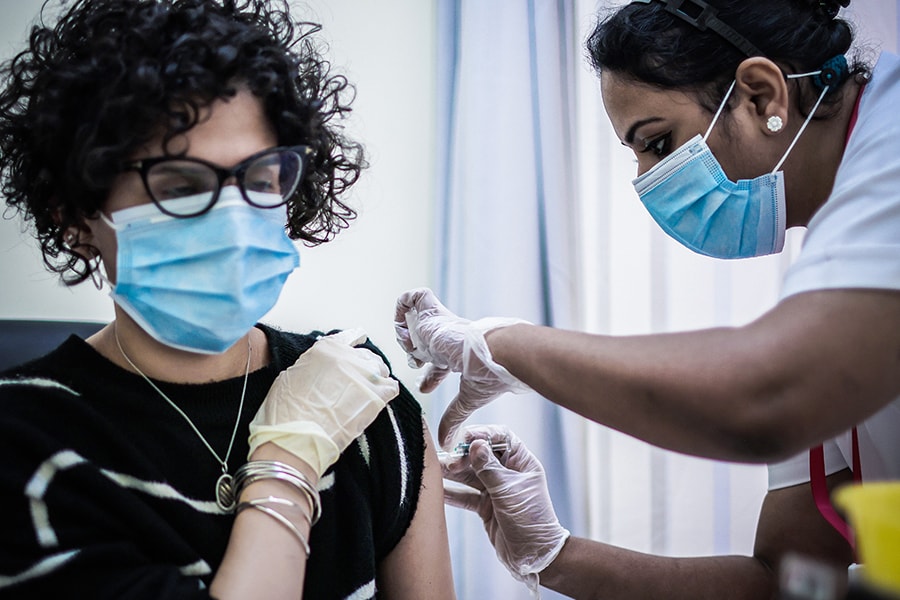
A Chinese COVID-19 vaccine has proved effective, its maker says
Sinopharm, a state-controlled firm said that a vaccine candidate made by its Beijing Institute of Biological Products arm had an efficacy rate of 79%
 A woman is vaccinated with a syringe of a Chinese COVID-19 vaccine, developed by medicine company Sinopharm, by a nurse during the mass COVID-19 vaccination process at the Exhibition Center, in Manama, Bahrain on December 19, 2020;Image: Ayman Yaqoob/Anadolu Agency via Getty Images
A woman is vaccinated with a syringe of a Chinese COVID-19 vaccine, developed by medicine company Sinopharm, by a nurse during the mass COVID-19 vaccination process at the Exhibition Center, in Manama, Bahrain on December 19, 2020;Image: Ayman Yaqoob/Anadolu Agency via Getty Images
A Chinese pharmaceutical company said on Wednesday that an early analysis of clinical trial results showed that one of its coronavirus vaccines was effective, an announcement that sent a positive signal for the global rollout of Chinese vaccines but lacked crucial details.
The company, a state-controlled firm called Sinopharm, said that a vaccine candidate made by its Beijing Institute of Biological Products arm had an efficacy rate of 79% based on an interim analysis of Phase 3 trials. Sinopharm said it had filed an application with Chinese regulators to allow the vaccine to be used broadly.
If supported, the results will bolster claims that Chinese officials have made in recent days that the country’s vaccines are safe and effective. Even without the government’s official approval, authorities have already moved ahead with mass vaccinations, defying industry norms. They plan to vaccinate 50 million people in China by mid-February, when hundreds of millions are expected to travel for the Lunar New Year holiday.
But Sinopharm’s announcement, only a few sentences long, provided no breakdown of results and left many questions unanswered, adding to a lack of clarity that has dogged China’s coronavirus vaccine development for months.
China’s drive to develop a homegrown vaccine speaks to the country’s technological and diplomatic ambitions. A successful vaccine would support the country’s claim as a peer and rival to the United States and other developed countries in biomedical sciences.
©2019 New York Times News Service




